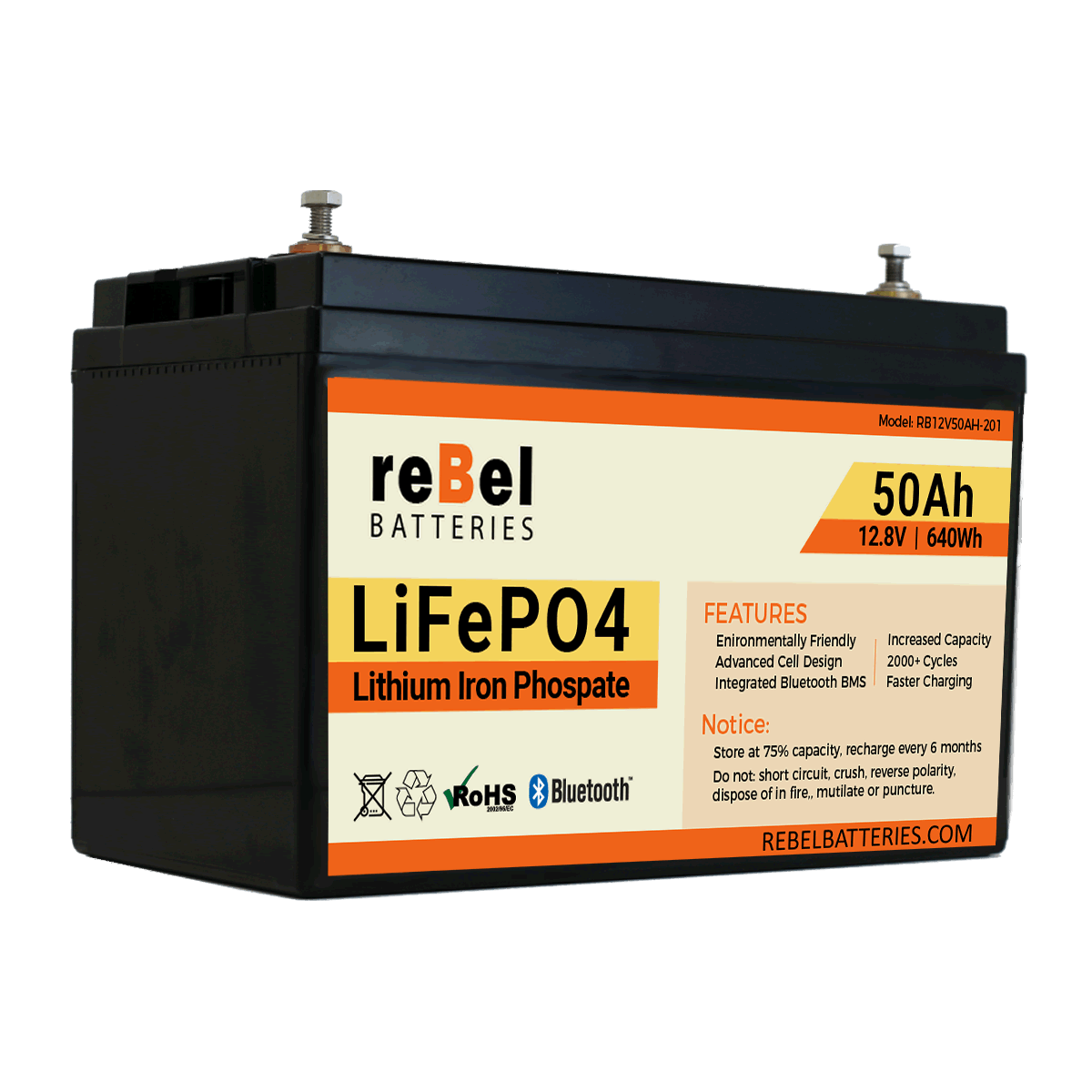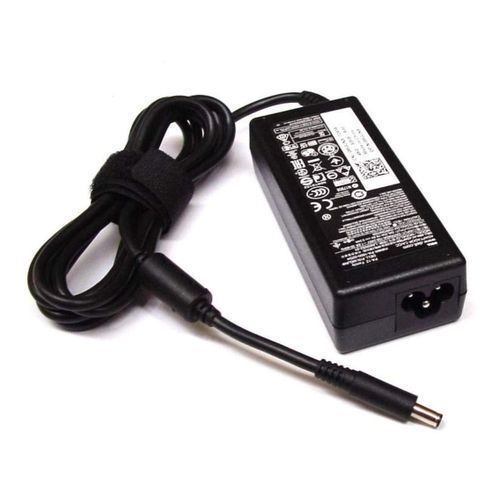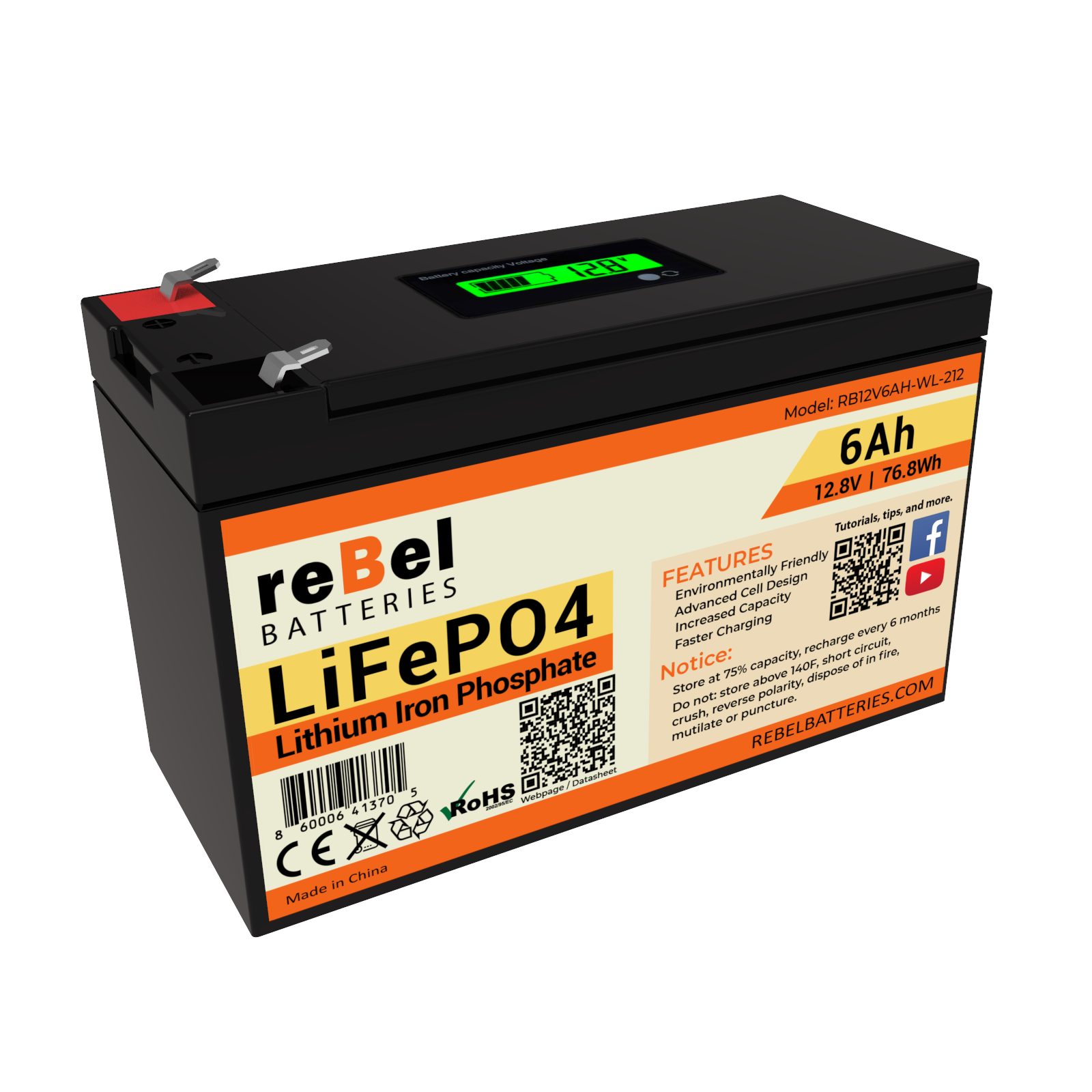If you're reading this you're probably either trying to decide if the switch to Lithium batteries is worth it or are buying a battery for the first time and wonder if Lithium Iron Phosphate batteries are really that much better than an AGM battery is?
In this article I will explain what you're getting with the two types of batteries. If you just want a short answer my opinion is Lithium Iron Phosphate batteries are great. They provide battery power that was unheard of being possible a few years ago. For the most part I will refer to the Led-Acid battery as an AGM battery and the Lithium Iron Phosphate battery as a Lithium battery.
For a fair comparison for the Led-Acid Battery I'll use an AGM battery. This way both batteries don't leak and both can be mounted in any position. So in that respect they're equal. Both are maintenance free with the exception AGM batteries do have led posts and can corrode under some conditions but I haven't seen one corrode very often.
If you're using or considering Flooded Led-Acid batteries you're in for a real treat with Lithium batteries. There's no need to add water, clean corroded posts, you don't have to deal with venting gasses and no more de sulfating batteries.
So lets say you buy an AGM 100AH battery for 200 dollars. Most are more but we'll use this figure. A 100AH Lithium Iron Phosphate battery can cost you as much as 5 times more but for this example we'll use the very reasonably priced reBel 100AH battery that will cost you close to 600 dollars. For that price you even get Bluetooth and an all metal case two features you don't get with most Lithium batteries that cost more. So lets round that to 600 to make this easy. That means the lithium battery will cost you three times what the AGM battery will.
Right off the bat you have to cut the AGM capacity in half because going below fifty percent will damage the battery and greatly shorten its life. So what you really have with the AGM battery is fifty usable amp hours you are limited on how you can make use of them. You get as little as twenty amp hours if you discharge the battery at a high current.
With the Lithium battery you can use 100 percent of its capacity getting the full 100 amp hours you paid for with no damage to the battery.
The AGM battery being a Led-Acid battery suffers from voltage sag.
The Lithium battery will drop in voltage gradually holding a very stable voltage regardless of whether you use one amp or the full C-rating of the battery.
The AGM battery must be discharged at its stated hour rate to get that fifty amp hours you can use. That's usually a 20 hour rate which means five amps for twenty hours some of will be below 12V. Yes, you can draw more but if you do you no longer get fifty amp hours and will see even faster voltage sag.
With the Lithium battery you can load the battery to its C-rating and still get over 90 percent of its capacity above 12V. That means you can draw 100 amps from a 100AH reBel battery for almost the whole cycle above 12V.
The reality is the AGM battery will be good for two or three hundred cycles if you only discharge it to fifty percent. Even then after only a few cycles you will see a noticeable loss in capacity. That doesn't mean the battery is bad. Led-Acid batteries just don't last that long. I know some companies state you can get hundreds of cycles some even say well over a thousand cycles. Read the fine print. That's if you only discharge the battery a little and at a certain amperage. I think a couple companies state you can discharge the battery twenty percent and get close to a thousand cycles. The battery in your car provides thousands of cycles but you only use a couple percent of its capacity each time you start the car. Some companies also say their AGM batteries can be discharged to 80 percent. Again read the fine print. Some of them also make clear you get fewer cycles if you do that.
Lithium batteries don't give off any gasses and are safe for indoor use.
AGM batteries are also rated safe for indoor use and to be fair for the most part they are. However, they can and will give off gasses if overcharged or if a high current far above their rating is drawn. If shorted they can give off gasses a spark could ignite.
The BMS in Lithium batteries protects against a short circuit, overcharging and over discharging.
An AGM battery not only provides as few as two or three hundred cycles at fifty percent DOD. My experience has been if you get that many cycles there's no real usable capacity left.
The Lithium battery is rated for over 2000 cycles and should have between seventy and eighty percent of its capacity left when all those cycles are used, and that's at 100 percent DOD. But sure, if you baby the battery you can get thousands more cycles out of it. In fact as many as seven thousand cycles according to a few companies. And that's still using a good share of the batteries capacity. It will be many cycles before you will notice less capacity.
Lets say you always charged your battery at the max C-rating, always discharged it to 100 percent and only had fifty percent of its capacity left after 2000 cycles. I think most people will agree at that point they got more than their moneys worth out of the battery. But the Lithium battery would still have the capacity you could use from an AGM battery when it was new and you could still use one hundred percent of that fifty amp hours up to the C-rating of the battery for probably another three or four hundred cycles. If you or someone you give the battery to needs a battery with twenty or thirty amp hours the battery could still be used for hundreds of cycles.
AGM batteries charge slowly especially when they get to the final stage of charging.
Lithium batteries can be charged fast safely and will take the full charge current right up to almost the very end of charging.
AGM batteries are between 75 and 85 percent efficient. This means you loose some of the power you charge them with and loose power when you discharge them. This inefficiency gets worse as the battery ages and is greatly increased if the battery is charged fast.
Lithium batteries on the other hand are 99 percent efficient, they will accept almost all of the power you feed them and they will give you almost all of that power back when they're discharged. This is a real plus if you're using solar and want to capture all the power you can.
AGM batteries have a high self discharge rate although my experience has been not as much as most people say they have. That being said they do have a good amount of self discharge when sitting around and must be charged every few months.
Lithium batteries have a very low self discharge rate and can be stored for a couple years without being charged as long as they're charged before being stored.
AGM batteries must be kept fully charged or they will degrade.
Lithium batteries don't care if they're fully charged or not. In fact you can store one fifty percent charged for over a year and it will be just fine. You can even only charge them to eighty percent every time you use them and it won't hurt them at all.
AGM batteries are very heavy. On top of that you're carrying weight you can only use half the capacity from which means you're carrying a lot of dead weight.
Lithium batteries are less than half the weight of an AGM battery and you're not carrying around any dead weight when you use them.
One argument I have heard some people see as a negative point of Lithium batteries is regarding the electronics in Lithium Iron Phosphate batteries. I know Lithium batteries have electronics and electronics can and do sometimes fail. So can the BMS in one fail? Sure it can but AGM batteries can and I assure you do sometimes have cells that go dead because they short. And battery chargers also have electronics in them. I have only had three chargers go bad on me in the past twenty years and two of them had given me many times my moneys worth before they quit. Folks you can see negative points with anything you consider buying. The point is today electronic components even the cheep stuff is usually pretty good. The failure rate of the BMS in Lithium batteries is extremely low. The failure rate of AGM batteries is very high in comparison. Landfills are full of them. A good share of AGM batteries that fail do so because of their short life span compared to Lithium batteries.
The reBel batteries come with a five year warranty like some AGM batteries do. The difference being most AGM batteries are prorated if you have a problem and many of them that are intended for deep cycle use are only covered for one or two years. If you're going to have a BMS or a cell failure in a Lithium battery chances are it will happen long before the five years are up. The main reason being because of the high current the BMS has to carry you can't cut corners, use lighter duty components and get away with it. The output transistors for example have to be capable of carrying the batteries rated current or they will go bad right away.
Speaking of the electronics in Lithium batteries. The BMS gives you features you don't get with an AGM battery like low and high temperature protection, over discharge and over charge protection, Bluetooth monitoring in several like the reBel batteries and short circuit protection as well as overload protection.
In conclusion in their day Lead-Acid batteries were great for the time but today we have much better battery technology with Lithium Iron Phosphate batteries. Their cycle life, usable capacity and flat discharge curve features alone make them well worth the extra up front cost, and the cycles you get from them make them a much cheaper battery in the long run. All the special features Lithium Iron Phosphate batteries include sweeten the deal.



